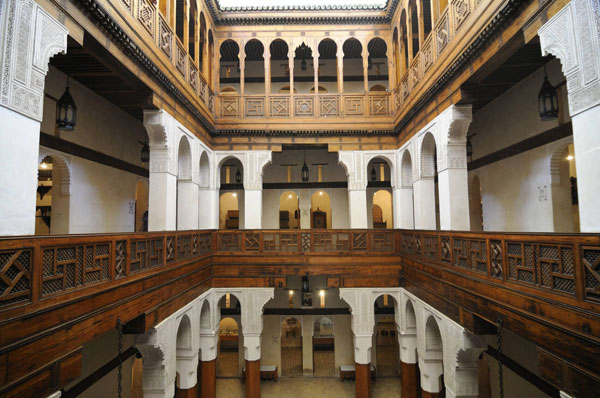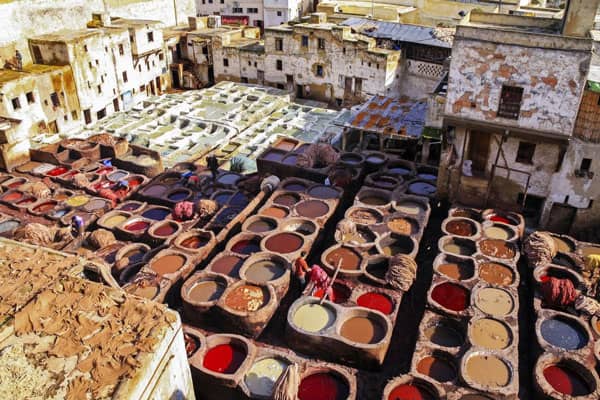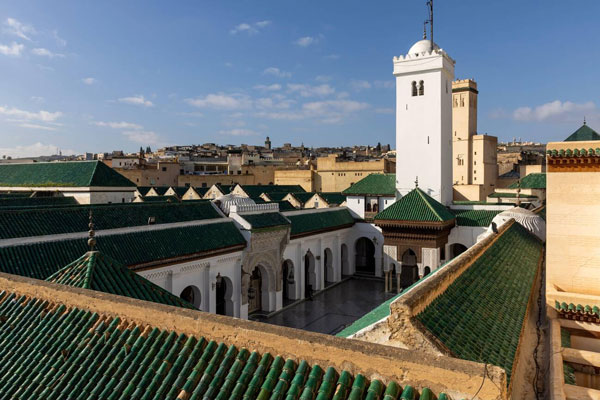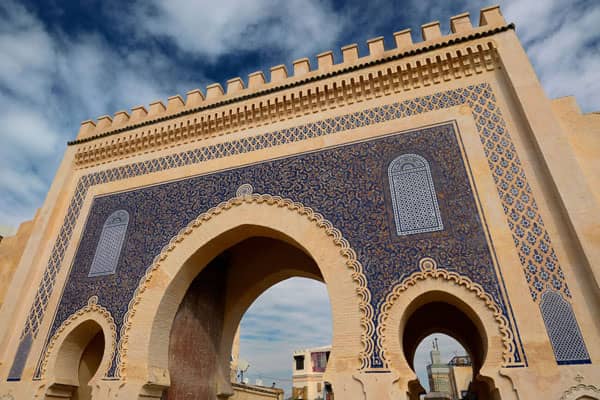Step Inside the Medina of Fez: Experience Morocco’s Living Heritage
Nestled in the heart of Morocco lies the Medina of Fez, a sprawling ancient city that has stood as a living testament to centuries of Moroccan history, culture, and craftsmanship. Known as one of the world’s largest and best-preserved medieval urban centers, the Medina is a UNESCO World Heritage site that captivates visitors with its labyrinthine streets, bustling souks, and stunning architecture.
Walking through the Medina of Fez is like stepping back in time—where every alleyway and corner tells a story of a rich past shaped by scholars, artisans, and traders. From the intricate mosaic tiles and towering minarets to the timeless art of leather tanning, Fez’s old city remains a vibrant hub of Moroccan tradition and daily life.
Whether you’re drawn by its historical significance, its vibrant markets, or the chance to witness centuries-old crafts firsthand, the Medina of Fez promises an unforgettable journey into the soul of Morocco.
Historical Background
The Medina of Fez dates back to the 9th century when the city was founded by Idris I and later expanded by his son, Idris II. Fez quickly became a vital center of political power, religion, and learning in Morocco and the wider Maghreb region. Over the centuries, the city flourished under successive dynasties — including the Almoravids, Almohads, and Marinids — each leaving their unique mark on the city’s development.
During the Marinid dynasty in the 13th and 14th centuries, Fez reached its golden age, becoming a beacon of Islamic scholarship, culture, and architecture. It was during this period that the famous Al-Qarawiyyin University was established, solidifying Fez’s reputation as a center for learning that attracted scholars from across the Muslim world.
Despite challenges such as invasions and political shifts, the Medina has remained the cultural and spiritual heart of Fez. Today, it stands as one of the most important and best-preserved historic medinas in the Arab world — a living archive of Morocco’s rich and diverse history.
Architecture and Urban Layout
The Medina of Fez is renowned for its intricate and seemingly labyrinthine network of narrow streets, alleys, and passageways that twist and turn through the ancient city. Designed centuries ago, this urban maze was intentionally planned to provide shade and protection from the desert heat, creating a cool, pedestrian-friendly environment.
The medina’s architecture reflects the pinnacle of traditional Moroccan and Islamic design. You’ll find stunning examples of riads—traditional Moroccan houses built around a central courtyard or garden—featuring intricate zellij tilework, carved cedar wood, and stucco decorations.
Surrounding the medina are massive fortified walls punctuated by impressive gates like Bab Bou Jeloud (the Blue Gate), which welcomes visitors with its iconic blue and green tiles. These gates not only served as defensive structures but also marked important entry points into various parts of the city.
Inside, the Medina is organized into specialized souks (markets), each dedicated to a particular craft or trade. For instance, the Souk el-Attarine is famous for perfumes and spices, while the Souk Nejjarine focuses on woodworking. This organization helped foster thriving artisan communities and made it easier for locals and visitors to find goods.
The Medina’s urban layout embodies a seamless blend of practical city planning and artistic expression, creating an environment where history and daily life coexist.
Key Landmarks Inside the Medina
The Medina of Fez is a treasure trove of historical and cultural landmarks, each telling a unique story about the city’s illustrious past and vibrant present. Here are some of the most iconic sites you shouldn’t miss when exploring this ancient city:
Al-Qarawiyyin University
Founded in 859 AD by Fatima al-Fihri, Al-Qarawiyyin University holds the distinction of being the oldest continuously operating university in the world. Originally established as a mosque and religious school, it evolved into a leading center of Islamic learning, philosophy, and jurisprudence. Scholars from across the Muslim world and beyond have studied here, contributing to its reputation as a beacon of knowledge. The university’s library, with its rare manuscripts and ancient texts, is a testament to Morocco’s rich intellectual heritage. While the university itself has restricted access, the surrounding architecture and the spiritual atmosphere make it a compelling site to admire.

Bou Inania Madrasa
Built in the 14th century under the Marinid dynasty, Bou Inania Madrasa is a stunning example of Islamic architecture and Moroccan craftsmanship. This theological school is renowned for its exquisite zellij tile mosaics, carved cedar wood panels, and stucco reliefs that adorn its walls and arches. Unlike many other religious buildings in Fez, Bou Inania’s minaret is accessible to visitors, offering panoramic views of the Medina’s rooftops and minarets. The madrasa’s peaceful courtyard, adorned with a central fountain, invites visitors to reflect on the spiritual and educational traditions that flourished here.

Nejjarine Museum of Wooden Arts & Crafts
Housed in a beautifully restored 18th-century funduq (a traditional caravanserai), the Nejjarine Museum celebrates the woodworkers of Fez and their centuries-old craft. The museum’s collection includes intricately carved furniture, musical instruments, and everyday wooden objects, showcasing the high level of artistry and technical skill passed down through generations. Visitors can also explore the rooftop terrace for a breathtaking view of the Medina’s skyline, capturing the blend of tradition and life pulsating through Fez’s narrow streets.

The Tanneries of Fez
Arguably one of the most iconic sights in the Medina, the Chouara Tanneries date back to medieval times and remain operational using traditional methods. From surrounding terraces, visitors can observe the vivid dye pits where animal hides are soaked and dyed using natural materials such as poppy flowers, henna, and indigo. The smell here is strong and distinctive, but it is an authentic glimpse into a centuries-old craft that has remained unchanged despite modern advances. The tanneries not only produce some of the world’s finest leather goods but also represent a living link to Fez’s artisanal heritage.

Historic Mosques and Fountains
Throughout the Medina, mosques play a central role in community life, not only as places of worship but as architectural masterpieces. Some notable mosques include the Al-Andalus Mosque and the Mosque of the Karaouine. Though non-Muslims cannot enter these sacred spaces, their ornate minarets and façades enrich the Medina’s skyline. Public fountains, often beautifully decorated, serve as gathering points where locals collect water and socialize, reflecting the communal spirit of the medina.

Bab Bou Jeloud (The Blue Gate)
Though technically a gate marking the western entrance to the Medina, Bab Bou Jeloud is one of the most photographed and beloved landmarks in Fez. Built in the early 20th century, this gate features stunning blue and green tilework symbolizing Fez’s rich cultural identity. Passing through it feels like crossing a portal into a timeless world of bustling markets and centuries-old traditions.

Ready to Step Inside Morocco’s Timeless Treasure?
Wander the ancient alleyways, marvel at centuries-old craftsmanship, and experience the living soul of Morocco in the Medina of Fez.
Don’t just read about history—walk through it.
👉 Plan your visit today and discover the magic of Fez!
Daily Life and Culture
The Medina of Fez is not just a historic site frozen in time—it is a vibrant, living city where thousands of people carry on traditions that have been passed down through generations. Life here moves at a unique rhythm, shaped by centuries of cultural heritage and community spirit.
Artisans and Craftsmen
One of the defining features of the Medina is its thriving artisan communities. Fez has long been a hub for traditional crafts such as leatherworking, pottery, metalwork, carpet weaving, and woodworking. Craftsmen often work in small workshops or studios tucked away in the winding alleys, carefully honing skills they inherited from their ancestors. Many of these trades are organized by guilds, which historically regulated quality and training. Visitors can often watch artisans at work, offering a fascinating glimpse into Morocco’s rich artisanal legacy.
Markets and Souks
The souks of Fez are the Medina’s beating heart. Each market specializes in particular goods—from spices and textiles to jewelry and leather products. Walking through the souks is a sensory adventure, filled with the aromas of exotic spices like cumin and saffron, the vibrant colors of woven fabrics, and the constant hum of haggling vendors. These marketplaces are more than just shopping destinations; they are social hubs where locals gather, exchange news, and maintain community ties.
Daily Rituals and Social Life
Daily life in the Medina follows traditions that blend spiritual practices with social customs. The call to prayer echoes regularly from the many mosques, marking moments of reflection and community gathering. Public fountains and hammams (traditional bathhouses) play important roles as places for socializing and cleansing. Cafés serve as lively meeting spots where locals sip mint tea, share stories, and relax after a busy day.
Cuisine and Food Culture
Fez’s culinary scene is deeply rooted in tradition. Street vendors and family-run eateries offer a range of authentic Moroccan dishes such as tagine, couscous, and pastilla. The Medina’s narrow alleys often lead to hidden cafés where the scent of fresh mint tea and sweet pastries fills the air. Sharing meals is an essential part of social life here, often enjoyed communally in a spirit of hospitality.
Festivals and Celebrations
The Medina comes alive during religious and cultural festivals, including Ramadan, Eid, and the annual Moulay Idriss Festival, which honors one of the city’s founding figures. During these times, streets fill with colorful decorations, special foods, music, and traditional performances, reinforcing the Medina’s role as a center of Moroccan cultural identity.
Visiting the Medina
Exploring the Medina of Fez is an unforgettable experience, but its maze-like layout and bustling atmosphere can be overwhelming for first-time visitors. With a little preparation, however, you can navigate this historic city with confidence and soak up its unique charm.
Getting Around
The Medina’s narrow streets are largely pedestrian-only, making it a perfect place to wander on foot. Motor vehicles are mostly banned inside, so walking is the best way to truly experience the vibrant life around you. Be prepared for uneven cobblestone paths and occasional crowds, especially in popular areas like the main souks.
Guided Tours vs. Independent Exploration
Many visitors choose to hire a local guide who can provide insights into the Medina’s history, point out hidden gems, and help negotiate prices in the markets. Guided tours often include visits to key landmarks like the Al-Qarawiyyin University and the Tanneries. If you prefer exploring on your own, carrying a detailed map or a reliable app can be invaluable to avoid getting lost.
Best Times to Visit
The Medina is most pleasant to explore during the cooler morning hours or late afternoon, especially in the hot summer months. Weekdays tend to be less crowded than weekends, and visiting during religious holidays can offer a unique cultural experience but also increased crowds.
What to See and Do
Beyond the famous landmarks, take time to visit the less crowded souks, traditional craft workshops, and hidden riads that sometimes open their doors to visitors. Don’t miss tasting local street food, and if possible, attend a traditional music performance or cultural event.
Practical Tips
- Dress modestly and respectfully, especially when visiting religious sites.
- Carry small change for shopping and tipping.
- Stay hydrated and wear comfortable shoes.
- Be aware of your belongings in busy areas to avoid pickpocketing.
- Learn a few basic Arabic or French phrases to connect with locals.
By approaching your visit with curiosity and respect, you’ll find the Medina of Fez an endlessly fascinating place full of stories and surprises.
Challenges and Preservation Efforts
The Medina of Fez, while a living heritage site, faces numerous challenges as it balances tradition with the demands of the modern world.
Urban Pressures and Modernization
Rapid population growth and urban expansion have put significant pressure on the Medina’s infrastructure. Narrow streets and aging buildings make it difficult to accommodate modern amenities such as sanitation, electricity, and traffic management. Additionally, the rise of mass tourism has brought both economic benefits and challenges, including overcrowding and environmental strain.
Preservation and Restoration Projects
Recognizing the Medina’s cultural importance, Moroccan authorities, alongside UNESCO and various international organizations, have launched extensive restoration and conservation programs. These efforts aim to repair crumbling structures, preserve architectural details, and maintain the authenticity of the Medina’s historic fabric. Projects often involve local craftsmen using traditional techniques, which also helps sustain artisanal trades.
Community Involvement
Sustainable preservation depends heavily on the involvement of the Medina’s residents. Many initiatives now focus on improving living conditions, supporting local businesses, and educating the community about the value of cultural heritage. Programs promoting responsible tourism encourage visitors to respect local customs and support artisans rather than mass-produced souvenirs.
Economic and Social Impact
Tourism provides essential income for many families in the Medina but also risks commodifying culture if not managed carefully. Efforts to balance economic development with heritage preservation aim to ensure that the Medina remains a vibrant, authentic place for future generations.
Despite the challenges, the Medina of Fez continues to thrive as a symbol of Moroccan identity and resilience, thanks to the dedication of its people and the global community.
Conclusion
The Medina of Fez stands as a remarkable testament to Morocco’s rich history, cultural diversity, and enduring traditions. Far more than just a collection of ancient buildings and markets, it is a living, breathing city where past and present intertwine seamlessly. From the world-renowned Al-Qarawiyyin University to the vibrant souks and time-honored crafts, the Medina invites visitors to step into a world that has inspired scholars, artisans, and travelers for over a millennium.
Exploring the Medina is not only a journey through architectural marvels and historic landmarks but also an immersion into daily Moroccan life — its rhythms, flavors, and stories. Preserving this cultural treasure is essential, not just for Morocco but for the world, as it offers invaluable insights into human creativity, community, and resilience.
Whether you’re a history enthusiast, a culture lover, or an adventurous traveler, the Medina of Fez promises an unforgettable experience filled with discovery and wonder. Step inside, and let this timeless Moroccan gem reveal its many secrets.
